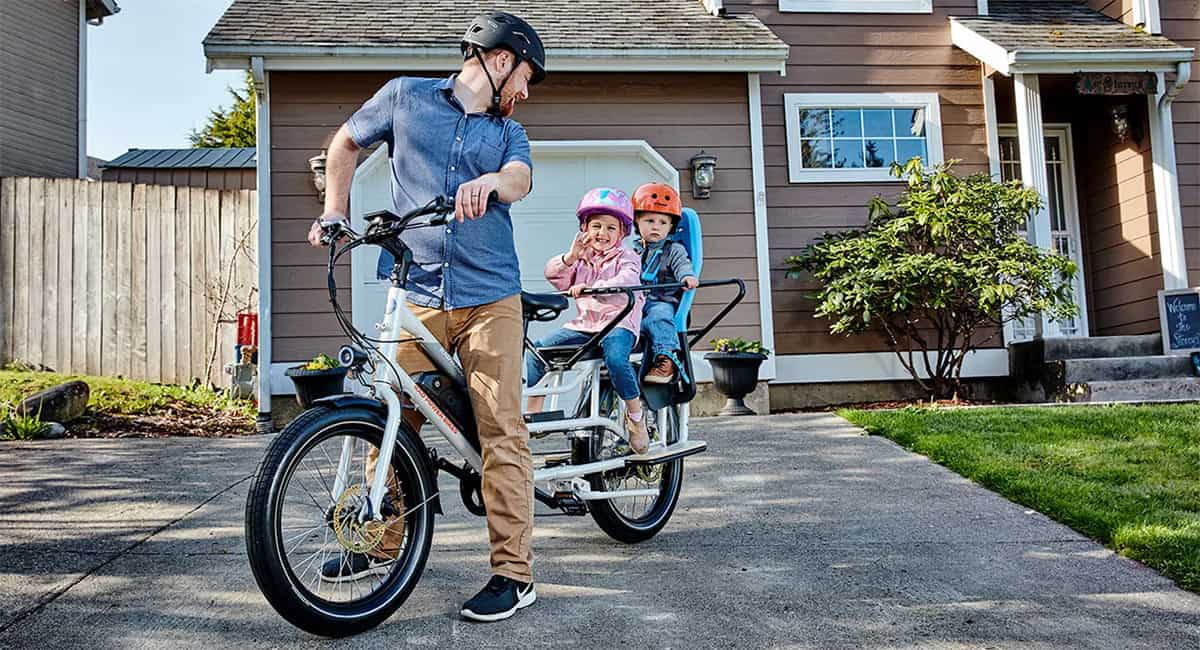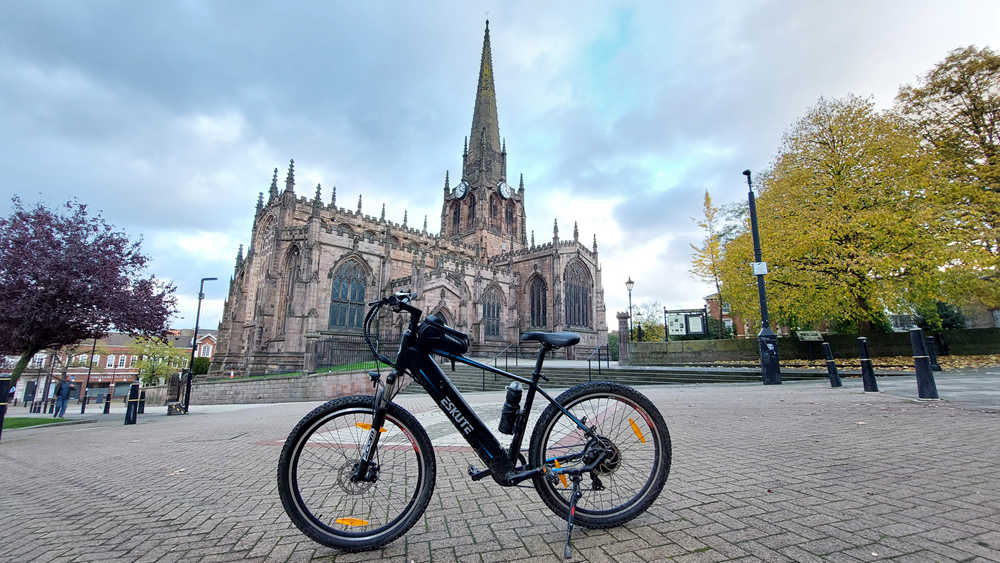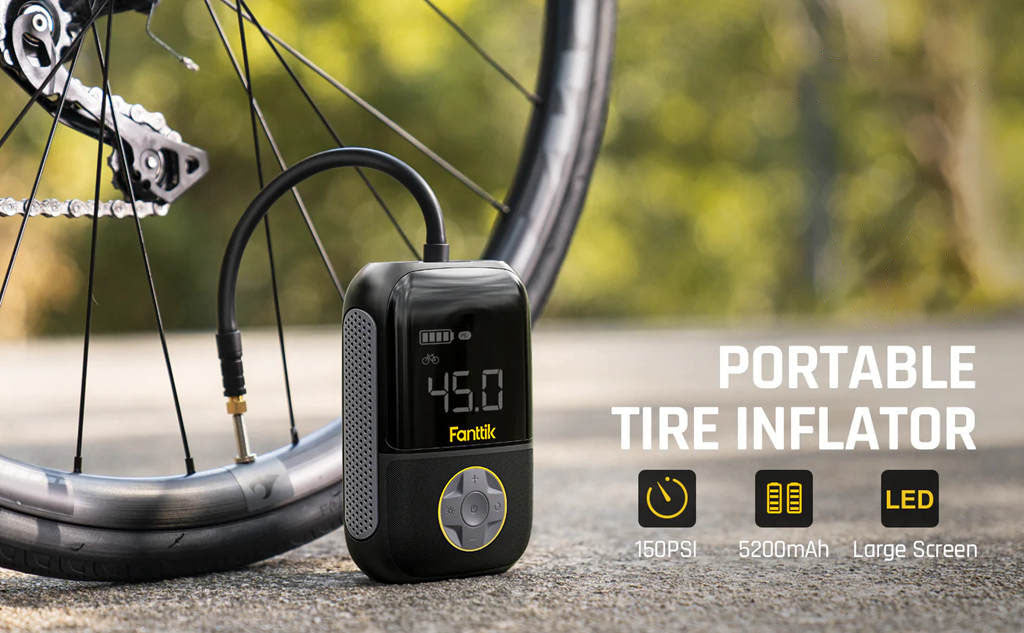Navigation
Is riding an electric bike with children safe?
The short answer is yes.
E-bikes are totally safe for adolescents and children as long as you follow some basic principles and rules.
The use of e-bikes has increased due to the recent pandemic, a lighter carbon footprint, low cost, and convenient travel characteristics. However, the increased usage also means more reported injuries in adults and children.
Before going ahead with ways to improve child safety, it's important to know what we're up against. Let's discuss the common injuries that happen because of e-bikes so we can prepare accordingly.
Common Injuries due to E-bikes
The injuries suffered on an electric bike could result in several ways, for example colliding with pedestrians, other cyclists or cars, or the environment around you.
According to a study from the National Trauma Registry, the majority of the orthopaedic (bone-related) injuries presented to the hospital due to an e-bike injury compromised of the following:
- Lower spinal cord injury
- Pelvis (hip bone) fractures
- Tibia, femur (bones of the leg) fractures
- Upper limb fractures and dislocation
- Head and neck injuries and lacerations (small cuts)
E-bikes have a slightly higher rate of accidents than pedal bikes, but that's expected considering the speeds at which a person rides an e-bike are also greater.
There are two ways in which you could have your children accompany you when you're e-biking. One could be using an electric cargo bike with attached seats. The other could be getting them their e-bike. Depending on the age of your kids and the travelling, you could choose the best option for your specific needs.
We will dive into both of these methods and the safety techniques that could be employed.
Safety tips for electric cargo bikes

For those unfamiliar, electric cargo bikes are an e-bike that allows you to carry either extra luggage with you or other passengers.
There are two types, one with a carrier between you and the front wheel, whereas the other is known as mid or longtail and consists of an extended rear rack.
However, the suggestions given next apply to both types of cargo bikes.
-
Apply seat paddings
While this may be common sense to some, it's still important to mention. When seat paddings are applied to electric bikes, it makes the ride more comfortable and easier for your children.
They also prevent any injury from heavy shocks and jumps, as well as any irritation from sitting for extended periods
2.Don't forget a helmet
According to one source, almost three out of every four fatal crashes (74%) involved a head injury. And almost all bicyclists who died (97%) did not have a helmet on when riding. [1]
Some people take helmets as less important when riding e-bikes; however, it is the one obligatory thing you need to have while riding an e-bike.
One study pointed out that deaths caused by head injuries accounted for around 89 per cent of electric bike fatalities, electric bike riders composed up a major proportion of fatalities in RTAs (road traffic accidents), and using electric bikes without a helmet is a major cause of deaths [2].
The helmet is as important for the children riding the cargo bikes as it is for the rider. If the children are hesitant about the idea, there are loads of fun helmets with illustrations that make them attractive to kids.
And even if they're irritating to the kids, they're worth the extra protection they provide. So, have the children wear a helmet and lock the chin straps.
3.Keep their feet planted.
It can be annoying and dangerous if your kids dangle their feet while you're riding the e-bike. While it may look cute, it could be a safety hazard in some circumstances.
To avoid this, install running boards on the bottom where the children can rest their feet. Other accessories available might be more child-friendly and provide a platform for their small feet to rest.
4.Use straps
You will probably also carry some luggage or gear along with the children. You must use straps to tie those items down in a fixed place. Tie them as tight as possible, and ask your children not to interfere with them.
If left free, they could be a safety hazard for you and the children. Buy the straps from a trusted source since low-quality straps can break and do more harm than good.
Safety tips for children riding e-bikes

The other scenario is that your children ride electric bikes instead of cargo e-bikes. While it's up to your discretion at what age you find that children should be allowed to ride an e-bike.
Generally, the minimum age to ride an e-bike is 14 years old. And if your kids want to try a moped, be cautious; riders' ages should be above 16 and above 17 years old for a motorcycle.
After you've ensured that your children are old enough to ride an e-bike, the following tips must be kept in mind.
-
Choose the correct e-bike.
This is the most important suggestion if you don't have electric bikes already. Ensure that you have a reliable and trustworthy bike since no risks can be taken, especially when kids are involved.
While the type of e-bike you use depends on your particular needs and judgment, you must buy the e-bike from an authentic vendor. An ideal place to get the e-bike of your choice is Eskute.
Eskute has been providing genuine electric bikes in all categories at an affordable price; visit the online store to get the perfect bike for your needs.
2.Make all necessary preparations.
This means a thorough review of everything and planning in advance. Make sure that all the bikes are working correctly. Check their brakes, battery level, and motor and tyre pressures.
If the trip is supposed to be lengthy, you must carry sufficient snacks and fluids for the journey and that your equipment and gadgets are charged. Everyone should carry water bottles to keep them hydrated throughout the journey.
Additionally, if you don't know the area well, it might be helpful to download the map of your route on your mobile or try memorizing the route and layout beforehand. Since there might be low signals in some areas, or you might run out of battery, it is important to keep a physical map with you just in case.
Instruct the children how to communicate properly during the ride, whether through hand signals or else. Try to ensure that everyone travels in bike lanes and paths or as close to the curb as an alternative. You could also attach a GPS tag to each bike as a safety measure.
3.Travel as a group
When cycling with children, everyone must travel together, and you coordinate in advance what happens in case someone gets too far ahead or behind.
Always keep checking that everyone is moving in sight, and instruct everyone not to take a different path or shortcuts.
If your family or group is smaller, it's always a good idea to see whether other friends/relatives might be interested in joining you on the trip. The more, the merrier. That not only goes for the fun you'll have but also results in greater security.
As an extra tip, it's better to have a healthy adult-to-children ratio so that there are enough grown-ups to monitor things and keep them in check. If it's just you and several children, it might become increasingly difficult for you to ensure everyone is safe.
You could divide the children with you or your biking partner(s) and assign children that each of you would be responsible for when riding e-bikes, especially on longer trips.
Last Tip!
(Conclusion)

One last bit of advice is to not be overly robotic and strenuous about the guidelines and tips. While they're a useful list to be inspired by and remember, please don't take the fun out of everything by following them to the bone.
Make sure it's a relaxing and exhilarating experience for both yourself and the children, and keep that a priority while ensuring safety. Once you've taken the necessary precautions, savour the moments and let kids be kids!
References
1. "Bicycle Helmet Statistics." Accessed November 3, 2022. https://helmets.org/stats.htm
2. Zhou, Jibiao, Tao Zheng, Sheng Dong, Xinhua Mao, and Changxi Ma. "Impact of Helmet-Wearing Policy on E-Bike Safety Riding Behavior" International Journal of Environmental Research and Public Health 19, no. 5 (February 28, 2022): 2830. https://doi.org/10.3390/ijerph19052830.










Leave a comment
This site is protected by hCaptcha and the hCaptcha Privacy Policy and Terms of Service apply.